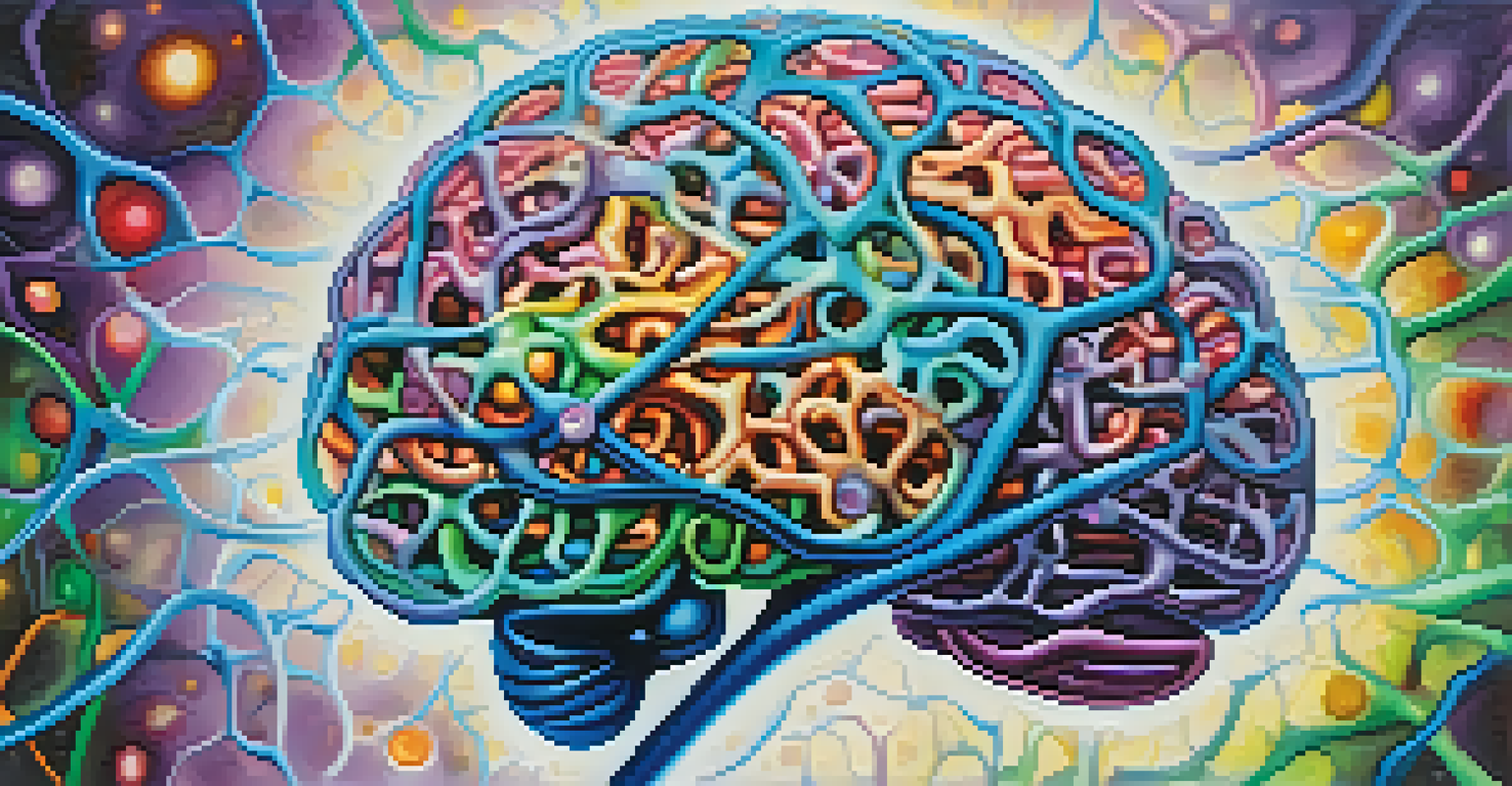Exploring the Safety of Entheogens in Psychotherapy Practice

Understanding Entheogens and Their Role in Therapy
Entheogens are substances that have been used for centuries in various cultures to facilitate spiritual experiences and self-discovery. In recent years, they have gained attention in psychotherapy for their potential to aid in healing mental health issues. Common examples of entheogens include psilocybin, the active compound in magic mushrooms, and ayahuasca, a traditional Amazonian brew. As therapy evolves, understanding these substances becomes essential for modern practitioners.
The greatest discovery of my generation is that a human being can alter his life by altering his attitude.
Many therapists and researchers are exploring how these substances can enhance therapeutic practices, particularly in treating conditions like PTSD, depression, and anxiety. The idea is that, when used in a controlled and supportive environment, entheogens can help patients access deeper emotional states and insights. However, it’s crucial to differentiate between recreational use and therapeutic applications, as the contexts and outcomes can be vastly different.
As the conversation around entheogens continues to grow, so does the need for thorough research on their safety and efficacy. This article will delve into the various aspects of entheogens in therapy, shedding light on both their potential benefits and associated risks.
The Science Behind Entheogens and Mental Health
Research into the effects of entheogens on mental health is still in its early stages, but results are promising. Studies suggest that substances like psilocybin may promote neuroplasticity, helping the brain form new connections and potentially leading to lasting changes in thought patterns. This can be particularly beneficial for individuals who feel stuck in negative cycles of thinking or behavior.

Moreover, entheogens seem to facilitate deep emotional processing, enabling individuals to confront and work through traumatic memories. For example, patients who have undergone psilocybin therapy report feeling a profound sense of connection to themselves and their experiences, which can lead to significant breakthroughs in therapy. This aspect highlights the potential of entheogens to enhance traditional therapeutic methods.
Entheogens Aid Mental Health Therapy
Entheogens like psilocybin and ayahuasca are showing promise in enhancing therapeutic practices for mental health conditions such as PTSD, depression, and anxiety.
However, it’s important to approach this field with caution. While initial findings are encouraging, more comprehensive studies are needed to fully understand the long-term effects and safety profiles of these substances in clinical settings.
The Importance of Dosage and Setting in Therapy
One of the critical factors affecting the safety and efficacy of entheogens in therapy is the dosage and setting in which they are administered. A controlled environment, guided by trained professionals, helps ensure that patients have a safe and supportive experience. This is often referred to as 'set and setting'—the mindset of the user and the physical environment where the experience takes place.
What we are today comes from our thoughts of yesterday, and our present thoughts build our life of tomorrow: Our life is the creation of our mind.
In therapeutic settings, dosages are carefully calculated to maximize benefits while minimizing risks. For instance, a microdose may help alleviate anxiety without overwhelming the patient, while a higher dose could facilitate deeper emotional exploration. The therapist's role is crucial in navigating these experiences, providing support and integration afterward to help patients make sense of their journeys.
Neglecting these factors can lead to adverse effects, such as anxiety or confusion during the experience. Therefore, ensuring a safe space and proper dosage is paramount in harnessing the therapeutic potential of entheogens.
Potential Risks and Side Effects of Entheogens
While entheogens show promise, they are not without risks. Some individuals may experience negative psychological reactions, such as anxiety, paranoia, or even psychosis, especially if they have a history of mental health issues. This underscores the importance of comprehensive screening before therapy to identify any potential contraindications.
Physical side effects can also occur, ranging from nausea to increased heart rate. These effects can vary significantly depending on the substance, dosage, and individual physiology. Therefore, understanding a patient's medical history and mental health status is essential for ensuring a safe therapeutic process.
Safety Depends on Dosage and Setting
The effectiveness and safety of entheogens in therapy are heavily influenced by the dosage administered and the controlled environment in which they are used.
Ultimately, the key lies in informed consent and thorough preparation. Patients should be made aware of potential risks and side effects before embarking on their therapeutic journey with entheogens.
Ethical Considerations in Using Entheogens
The incorporation of entheogens into psychotherapy raises important ethical questions. As these substances become more mainstream in therapeutic settings, practitioners must consider the implications of their use. This includes ensuring that clients are fully informed about the potential risks and benefits, as well as creating a supportive environment for exploration.
Moreover, cultural sensitivity is vital. Many entheogens have deep cultural roots, and their use should be respectful of the traditions from which they originate. Therapists must navigate the fine line between utilizing these substances for healing while honoring their historical significance.
Lastly, therapists need to grapple with their own biases and perceptions regarding entheogens. Ongoing education and open dialogue within the mental health community can aid in addressing these ethical dilemmas, ensuring that the use of entheogens is both responsible and beneficial.
The Role of Trained Professionals in Entheogen Therapy
The involvement of trained professionals is crucial in the safe administration of entheogens in therapy. These individuals should have a deep understanding of both the substances themselves and the therapeutic processes involved. Their expertise not only enhances the safety of the experience but also helps in maximizing its therapeutic potential.
In many cases, therapists work collaboratively with trained facilitators who specialize in entheogen therapy. This team approach ensures that patients receive comprehensive support throughout their journey. The facilitator often guides the experience, creating a safe space for exploration and emotional processing, while the therapist helps integrate insights afterward.
Ethics and Training are Crucial
The use of entheogens in psychotherapy raises ethical concerns and necessitates the involvement of trained professionals to ensure a responsible and beneficial approach.
This collaboration highlights the need for ongoing education and training in the field of entheogen therapy. As more practitioners seek to include these substances in their practice, fostering a community of knowledgeable professionals will be key to maintaining high standards of care.
Future Directions for Entheogen Research and Therapy
As the interest in entheogens continues to grow, so does the need for more rigorous research. Future studies should aim to explore not only the safety and efficacy of these substances but also their potential to address various mental health conditions. Longitudinal studies could provide insights into the long-term effects and therapeutic outcomes of entheogen use in psychotherapy.
Moreover, the development of standardized protocols for entheogen therapy could enhance safety and consistency across practices. This includes guidelines for dosing, patient screening, and follow-up care, ensuring that all practitioners operate under a shared framework of best practices.

Ultimately, the future of entheogens in psychotherapy holds great promise, but it requires a commitment to research, ethics, and education. By prioritizing these areas, the mental health community can harness the potential of entheogens while ensuring patient safety and well-being.